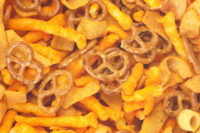Bread, rolls contribute to children’s excessive sodium intake, says CDC report


|
In a new report titled “Reducing Sodium in Children’s Diets,” the Centers for Disease Control and Prevention (CDC) cites bread and rolls as some of the leading causes of children’s excessive sodium intake, according to the Independent Bakers Association (IBA). The CDC concludes that 90% of children between the ages of 6 and 18 consume too much sodium. The research indicates that nearly half of children’s sodium intake comes from 10 foods: Pizza; bread and rolls; savory meats; sandwiches; cheese; chicken patties; chicken nuggets; pasta; Mexican dishes; and soups.
The CDC report warns parents that one in six children have high blood pressure, possibly caused by the amount of sodium in their diets. The CDC recommends that parents increase the amount of fruits and vegetables they give their children, as well as purchase low-sodium food items.
The report also advocates for federal regulations to reduce sodium levels by 50% by 2022. The Healthy Hunger-Free Kids Action requires the U.S. Department of Agriculture (USDA) to draft new regulations on the presence of sodium in foods served at public schools, says IBA. While the regulations are not finalized, the preliminary proposals present significant challenges to food providers. The School Nutrition Association (SNA), which is petitioning Congress to permit temporary waivers to the nutrition standards of the legislation, has yet to comment on the findings and suggestions of the CDC report.
Source: Independent Bakers Association
Looking for a reprint of this article?
From high-res PDFs to custom plaques, order your copy today!








